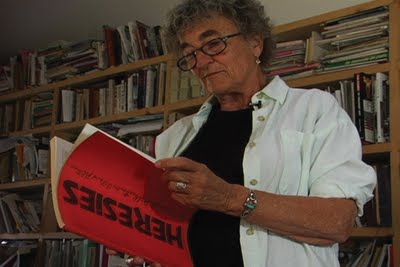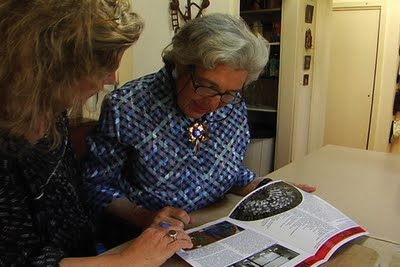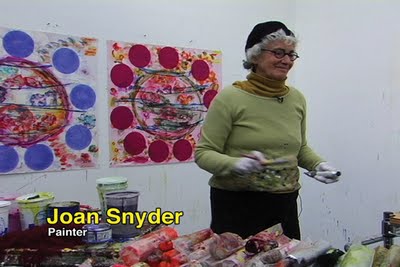We announced the winners of the 2009 New England Art Awards at the Burren in Somerville, Massachusetts, tonight. They are:
ArtistsBookPeople's choice: Michael Russem of Kat Ran Press in Cambridge and Florence, Mass., publisher of 'The Certainty of Numbers,' written by Bruce Snider and illustrated by Michael Russem.
Critics' pick: Brian Vanden Brink of Camden, Maine, "Ruin."
Drawing/PrintmakingCritics' pick: Steve Locke of Boston at Samson.
People's choice: Mary O'Malley of Somerville, Mass., in "Economies of Scale,” Miller Block.
InstallationCritics' pick and people's choice: Maria Magdalena Campos Pons and the students of her School of the Museum of Fine Arts Installation Art class, "War-room" installation and special projects for "Sleep No More" in Brookline, Mass.
New MediaCritics' pick: Brian Knep of Cambridge at Tufts.
People's choice: Krzysztof Wodiczko of Cambridge, New York and Warsaw, Poland, at ICA.
PaintingCritics' pick and people's choice: Mark Wethli of Brunswick, Maine, at Icon Contemporary Art.
PhotographyPeople's choice: Isa Leshko of Salem, Mass., (now Houston) in "The Boston Drawing Project 10 Years On and Going Strong” at Carroll and Sons, “New England Photograpy Biennial” at Danforth, and Susan Maasch Fine Art in Portland.
Critics' pick: John O'Reilly of Worcester at Yezerski.
SculptureCritics' pick: Darren Foote of Providence at Rotenberg.
People's choice: Christy Georg of Boston at Simmons College’s Trustman Art Gallery.
Performance or spectacleCritics' pick: Bread and Puppet Theater of Glover, Vt., performances in Vermont, at BCA and Spontaneous Celebrations in Boston.
People's choice: Honk Parade in Somerville and Cambridge.
Career surveyPeople's choice: Gerry Bergstein of Cambridge, at Danforth Museum.
Critics' pick: Robert Indiana of Vinalhaven Island, Maine, at Farnsworth Museum.
Standout work by a local artist in a group showPeople's choice (tie):
Alexi Antoniadis of Newtonville and Nico Stone of Chelsea in "Salt of the Earth," Montserrat.
Sand T of Malden, Mass., SHOW #54 at SNO in Sydney, Australia.
Critics' pick:
Georgie Friedman of Boston "Geyser" at BC as part of Cyberarts Fest and "Spiraling Water" in "H20: Film on Water" in Newport, NH.
Solo show by local artist (or collaborative)Critics' pick (tie):
Anna Hepler of Portland at Montserrat.
The Miracle 5 of Somerville at Space 242.
People's choice:
Anna Hepler of Portland at Montserrat.
Public Exposure (public performance, sculpture, street art, scandalous arrest, etc.):People's choice and critics' pick: Protests at Rose Art Museum, Brandeis.
CuratorsSolo show of an artist from AwayCritics' pick and people's choice: "Shepard Fairey: Supply and Demand" Emily Moore Brouillet and Pedro Alonzo at ICA.
Concept/theme showCritics' pick and people's choice: "Twilight" Lauren Fensterstock at Maine College of Art’s Institute of Contemporary Art.
Group show featuring local artistsPeople's choice: “Megapolis Audio Festival” Justin Grotelueschen and Nick van der Kolk.
Critics' pick: “Portland Museum of Art Biennial” Jurors Elizabeth Burke, Dan Graham, and Denise Markonish.
Historical showCritics' pick and people's choice: "Titian, Tintoretto, Veronese: Rivals in Renaissance Venice" Frederick Ilchman at MFA.
Local curator of locally-made artPeople's choice: Maya Allison for "Pixilerations [V.6]: The Great Disruption", "Book as Post Modern Medium" (with Jesse Smith), “Collective Access” at 5 Traverse.
Critics' pick: Katherine French Boston Expressionism (David Aronson, Henry Schwartz, Gerry Bergstein) at Danforth.










